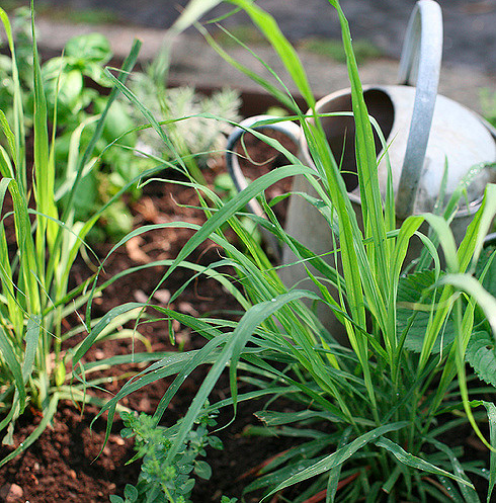
Lemongrass (Cymbopogon citratus) is a herb originating from Asian countries. It is easy to grow and can be viewed either as a tender perennial or an annual if grown in colder climates.[1] It is used in many culinary dishes, especially Asian cuisine.
Description
Lemongrass has long grass leaves in a light green colour.
Growing lemongrass
Lemongrass can be grown in containers or directly in the ground of your garden.
Lemongrass can be grown from seed, seedling from the nursery or by division. If growing from division, do so in spring or summer. To divide, Remove two or three of the outer stems, trim away the excess greenery, then plant in suitable soil.
The soil should contain plenty of manure (be rich) and well-draining. Grow in a sheltered place under full sun.
The plant is not frost tolerant, so if there is a risk of frost, bring it indoors or cover it.
Water regularly; the plant would benefit also from being misted if you live in a dry and hot climate zone. Fertilise regularly with compost and liquid fertiliser.
Cut back foliage that hasn't died down of its own accord in late winter. The cuttings can be used as mulch around the base of the plant.
Pests are not usually a problem if the plant is grown properly.[1]
Uses
Lemongrass is added to many Asian cuisine dishes and other dishes that benefit from a lemon-flavoured addition. To use, peel off the hard outer layer to reach the edible, softer layers inside.
Lemongrass tea is an enjoyable and refreshing form of herbal tea.
Lemongrass oil is used as a scent in perfumes, soaps and body products.[1]

Cats enjoy chewing and lying on lemongrass. In fact, they like it so much, that you may have to protect the plant from them if you want any for yourself!